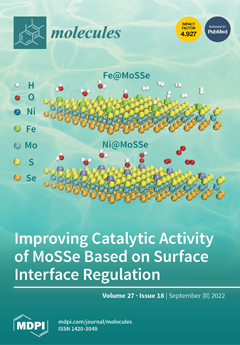Distiller’s grain is rich in natural active ingredients and can be used as an excellent antioxidant feed for goats. The current study aimed to assess the feeding value of four different types of distiller’s grains with an in vitro gas production trial. The chemical composition, total phenols, total anthocyanins, dry matter degradability, methane, hydrogen, and rumen fermentation parameters were evaluated. The results indicated that red distiller’s grain and glutinous rice distiller’s grain had higher (
p < 0.05) levels of crude protein than the other two types. There were significantly (
p < 0.05) higher concentrations of dry matter, ether extract, hemicellulose, and total carbohydrate in corn distiller’s grain than in the other three types of distiller’s grain. In addition, red distiller’s grain showed a higher (
p < 0.05) gas production rate constant (c) and ruminal outflow rate, as well as higher (
p < 0.05) concentrations of total phenol, total anthocyanins and 2,2-diphenyl-1-picrylhydrazyl (DPPH) scavenging activity, than the other three types of distiller’s grains. In contrast, red distiller’s grain displayed the lowest (
p < 0.05) immediately soluble fraction (a) and half the time of maximum gas production relative to the other samples. In particular, the levels of methane (%) in white distiller’s grain and glutinous rice distiller’s grain were greater (
p < 0.05) than that in red distiller’s grain. Moreover, the ammonia nitrogen content in red distiller’s grain was greater (
p < 0.05) than that in white distiller’s grain and corn distiller’s grain. In contrast, red distiller’s grain exhibited a lower (
p < 0.05) level of ruminal fluid acetic acid relative to that found in white distiller’s grain and corn distiller’s grain. Taken together, the results showed that red distiller’s grain and glutinous rice distiller’s grain could be used as protein feed, red distiller’s grain had higher levels of total phenols and total anthocyanins and a high DPPH scavenging activity; corn distiller’s grain might be considered as an alternative energy source feed, and white distiller’s grain exhibited higher total gas production.
Full article






